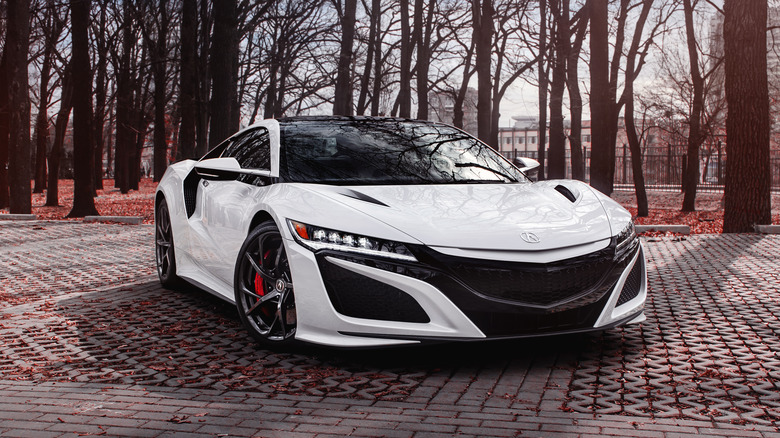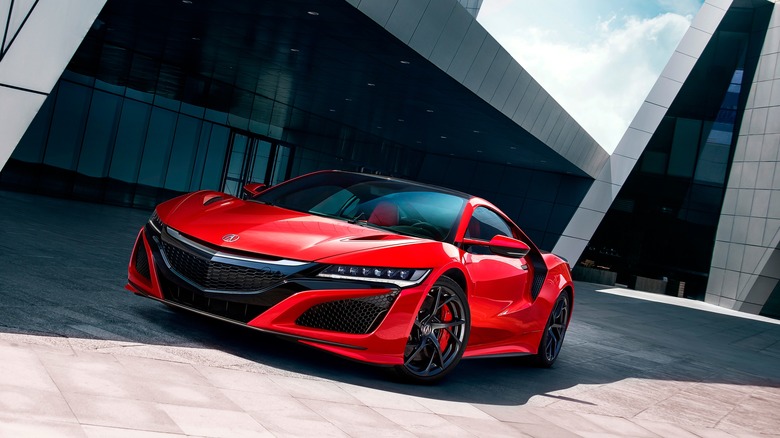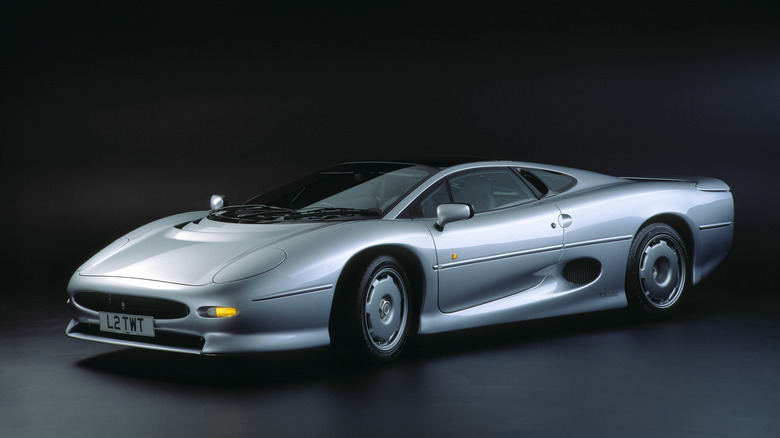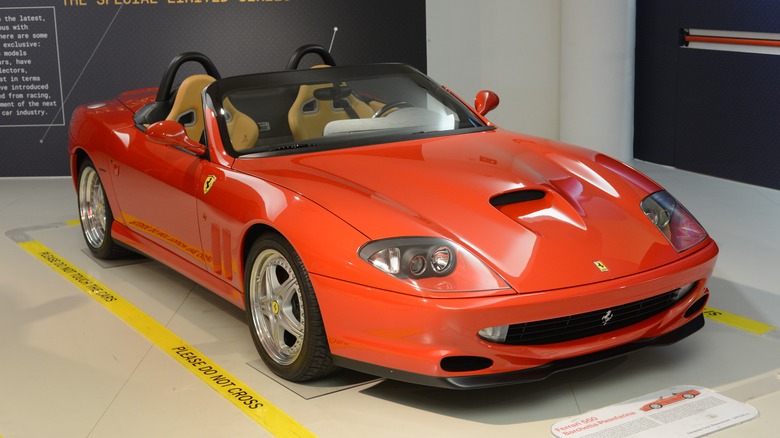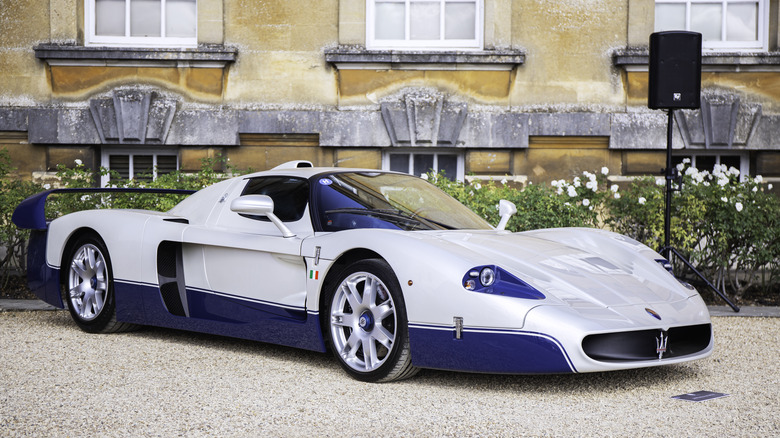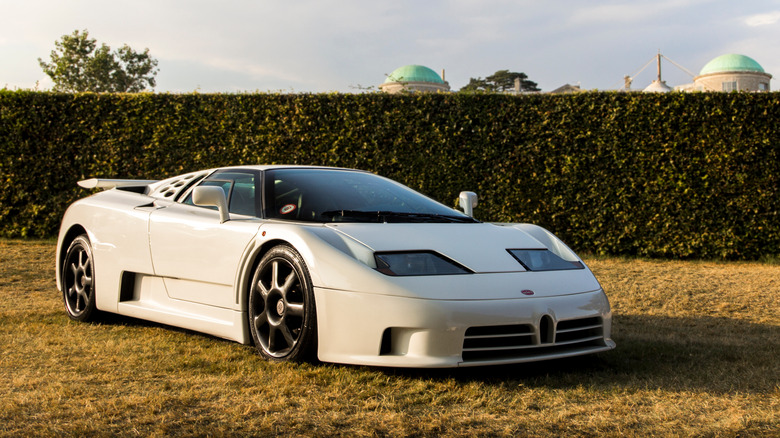5 Of The Most Underrated Supercars Ever Made
The words 'underrated' and 'supercar' perhaps shouldn't ever appear in the same sentence. While not every supercar is capable of Formula One lap times, some impress in other ways, with doors that open vertically, a screaming V10 engine, or a seven-figure price tag. Some are made from exotic materials like Pagani's carbotanium, an ultra-strong blend of carbon and titanium.
All supercars have something that sets them apart from mere sports cars, but some could be described as unlucky. Some are mechanically tricky, whether that be to build, maintain or drive. Some are born into the wrong time, finding themselves in the midst of a global recession, or up against icons like the McLaren F1. Others are seemingly cursed with bad luck from day one. But even these cars are special and, in our eyes at least, deserve a second chance.
That's why we've compiled this list of some of the most underrated supercars. It could be a much longer list, truth be told, but we've tried to narrow it down to include some of the most storied supercars of the last few decades.
Acura NSX
The second-generation Honda NSX (sold as an Acura in the US) must have endured one of the longest gestation periods of any car. Honda had originally planned for a front-engined V10 supercar to arrive in 2010, but this project was canned and instead, the NSX became a mid-engined car with a complex triple-motor hybrid system.
Connected to those motors is a 1.3kWh battery pack and a 3.5-liter, twin-turbocharged V6 engine that can shut down for short periods of electric-only driving. The total system output is an impressive 573 hp, which was raised to 600 hp for the end-of-line Type S edition of 2022. Even though it weighs 3,900 lbs, the NSX can hit 60 mph in 3.1 seconds (2.9 for the Type S) and has a top speed of 191 mph.
All of this makes the second-generation NSX sound like a genuine supercar. But consumers disagreed and the car failed to compete against the sales success of rivals like the Porsche 911, Audi R8, and various models of McLaren.
Praised for its daily-driving credentials, the NSX earned positive reviews from the press but was criticized for its lackluster interior, tiny trunk, and the borrowing of parts from other, cheaper Hondas.
Roughly 2,900 examples were sold globally, with 350 of those being the $170,000 Type S. These are tiny numbers compared to its rivals, but as a result, prices have remained firm on the secondhand market, especially for the Type S, with an example topping $270,000 in early-2023.
Jaguar XJ220
The XJ220 was first revealed in 1988 as a V12 supercar with all-wheel-drive and a plan to go racing. Deliveries were due to begin in 1992 and 1,500 eager customers handed over a £50,000 deposit to secure their cars, which were to cost £290,000 (about £760,000 or $930,000 today).
But then the early-1990s recession hit, engineering and emissions requirements ruled out the V12 engine and Jaguar was left with a turbocharged V6 supercar that customers no longer wanted. Eventually priced at £470,000, only 275 cars were produced as customers took legal action to get their deposits back since the car had changed so much from the original concept. It is widely reported that the final XJ220 wasn't sold until 1997 when it was snapped up for just £127,550.
Since then, according to Classic & Sports Finance, secondhand XJ220 prices fell to as low as £105,00, before recovering to almost £500,000 by 2018. They have since softened to between £250,000 and £350,000, but still indicate strong demand for a supercar that endured such a difficult birth.
Ferrari 550 Barchetta Pininfarina
Not just a convertible version of the Ferrari 550 Maranello, the 550 Barchetta Pininfarina is limited to just 448 individually-numbered examples and was built to commemorate the 70th anniversary of Pininfarina, Ferrari's then-coachbuilder and stylist.
Launched at the turn of the century, the Barchetta ('little boat' in Italian) is a true speedster with no convertible roof to erect if it rains. There is actually a detachable canvas roof for emergencies, but it looks truly terrible and should probably never be allowed out from the box it left the factory in.
Following the tried-and-tested Ferrari recipe, the 550 Barchetta has a big, 5.5-liter, naturally-aspirated V12 engine up front, a six-speed manual transmission with the company's iconic open-gate design, a top speed of 186 mph, and just two seats. The 550 was the first front-engined, V12-powered, rear-drive car since the 365 GTB/4 Daytona from two decades earlier — and that should be reason enough for the 550 to be a certified Ferrari great.
According to sales data from Bring a Trailer, the hard-top Maranello is worth in the $150,000 to $200,000 region (roughly where it started when new), while the rare 550 Barchetta commands $300,000 to $700,000 depending on mileage.
Maserati MC12 Stradale
When your sibling is the Ferrari Enzo, it's no surprise that you might sometimes be overlooked. The MC12 is the result of Maserati being taken under the wing of parent-company Fiat, giving it enough financial stability to consider getting back into racing. With Ferrari, also then owned by Fiat, creating the Enzo to celebrate its 60th birthday, Maserati saw an opportunity to borrow the chassis and engine of the Enzo and build its own race car.
To homologate the race car 50 street-legal Stradale versions were produced, with 25 built in 2004 and a further 25, this time 150mm (5.9in) shorter, made the following year. On top of the Enzo foundations sits a larger body penned by former Ferrari designer Frank Stephenson, whose resume also features the BMW Mini, current Fiat 500, and McLaren P1. Unlike the Enzo, the MC12 features a removable hard top for open-air driving, different engine mapping, and traditional dampers instead of the electronic ones used by the Ferrari, explains RM Sothebys.
Maserati entered the FIA GT and GT1 World Championship Series, resulting in five consecutive team championship wins for Vitaphone Racing and wins in the Manufacturer's Cup for Maserati in 2005 and 2007, plus numerous drivers' championships. Like its Enzo sibling, the Maserati is powered by a 6.0-liter V12 engine producing 630 horsepower. Today it is worth in the region of $3m to $4m.
Bugatti EB110
Revealed in 1991 and built to celebrate the 110th anniversary of the first of company founder Ettore Bugatti, the EB110 is described by its maker as "the first super sports car of the modern era". Although it looks a little dated by today's outlandish hypercar standards, the EB110 ticks a lot of the same boxes as contemporary exotics. It was the first street-legal car to use a carbon monocoque chassis and was powered a bespoke 3.5-liter, quad-turbocharged V12 engine revving to 8,250 rpm. Power outputs were between 552 and 602 horsepower depending on specification.
Despite its rarity — only 136 were built, including race cars and the Super Sport, of which just 30 exist — prices have failed to reach the stratospheric levels of other 90s supercars, like the McLaren F1. Sales data collected by Classic.com shows an average sale price of $2.3m, with the most recent sale being an example that sold at auction in late-2022 for $1.6m.
As for being underrated? Bugatti itself built an homage to the EB110 with the Chiron-based Centodieci, and when revisiting the original in 2019 MotorTrend wrote: "Yes, it was fast. But I also remember the EB110 as easy to drive. Fast or slow, on a winding road or a crowded city street, it was smooth and civilized, the ride remarkably compliant, the power steering beautifully weighted. The all-wheel-drive system's 27/73 front/rear torque split helped deliver prodigious traction and near-neutral handling, with just a touch of controllable oversteer right on the limit."
